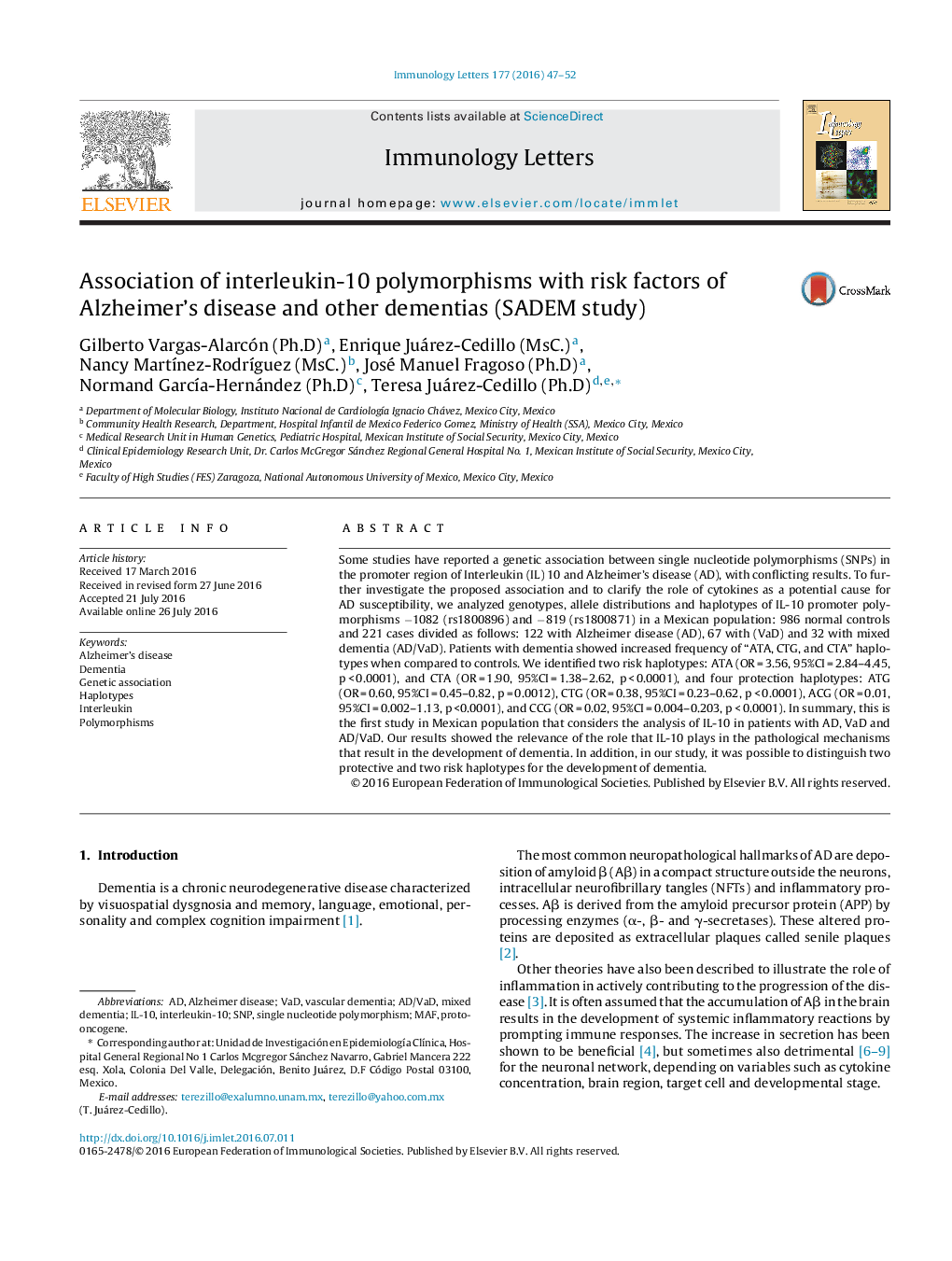| کد مقاله | کد نشریه | سال انتشار | مقاله انگلیسی | نسخه تمام متن |
|---|---|---|---|---|
| 3355233 | 1591549 | 2016 | 6 صفحه PDF | دانلود رایگان |

• This research hypothesizes possible mechanisms involved in the pathological process of dementia, as the role that IL-10 in this disease.
• Limiting the inflammatory response could slow the development and progression of the disease.
• These results clarify an association not only between Interleukin-10 and AD but also with other dementias in the Mexican population.
Some studies have reported a genetic association between single nucleotide polymorphisms (SNPs) in the promoter region of Interleukin (IL) 10 and Alzheimer's disease (AD), with conflicting results. To further investigate the proposed association and to clarify the role of cytokines as a potential cause for AD susceptibility, we analyzed genotypes, allele distributions and haplotypes of IL-10 promoter polymorphisms −1082 (rs1800896) and −819 (rs1800871) in a Mexican population: 986 normal controls and 221 cases divided as follows: 122 with Alzheimer disease (AD), 67 with (VaD) and 32 with mixed dementia (AD/VaD). Patients with dementia showed increased frequency of “ATA, CTG, and CTA” haplotypes when compared to controls. We identified two risk haplotypes: ATA (OR = 3.56, 95%CI = 2.84–4.45, p < 0.0001), and CTA (OR = 1.90, 95%CI = 1.38–2.62, p < 0.0001), and four protection haplotypes: ATG (OR = 0.60, 95%CI = 0.45–0.82, p = 0.0012), CTG (OR = 0.38, 95%CI = 0.23–0.62, p < 0.0001), ACG (OR = 0.01, 95%CI = 0.002–1.13, p <0.0001), and CCG (OR = 0.02, 95%CI = 0.004–0.203, p < 0.0001). In summary, this is the first study in Mexican population that considers the analysis of IL-10 in patients with AD, VaD and AD/VaD. Our results showed the relevance of the role that IL-10 plays in the pathological mechanisms that result in the development of dementia. In addition, in our study, it was possible to distinguish two protective and two risk haplotypes for the development of dementia.
Journal: Immunology Letters - Volume 177, September 2016, Pages 47–52